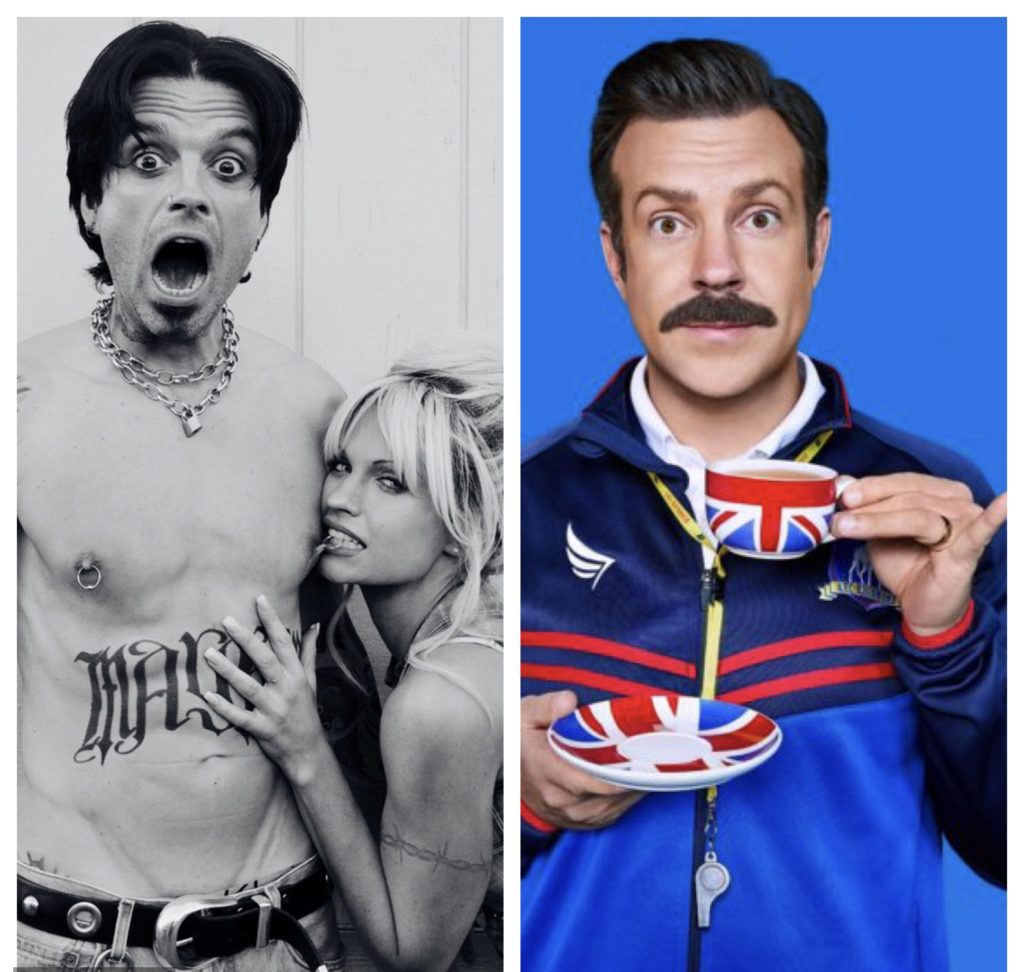
The pandemic has become the Black Plague to film. But it sure does love good TV.
Witness the latest television shows to dominate not only America’s nightly ratings, but its nightly chatter on social media (perhaps a more vital audience): Ted Lasso, Pam & Tommy and The Beatles: Get Back.
They seem starkly unique in audience, tone and subject matter. Lasso is a wonderful comedy that imagines Ned Flanders managing The Bad News Bears. Pam & Tommy is what a Paul Thomas Anderson TV show would look like: emotional depth drenched in Southern California sunshine. And Get Back is simply a nine hour jam session with the biggest band ever.
But all share a single chord: All are lyrical art.
Lyrical art has a breezy, wispy feel to it, which is why it is found most often in comedy — and more than ever on the small screen. The Beatles are obvious, but Lasso and Pamela underscore how television, particularly, flourishes as nearly every other form of entertainment falters during COVID.
Pam & Tommy lures audiences with a promise of details behind the homemade porn tape that became a household porn name. But it’s really about the death of the glam ’80’s and rise of the grunge 90’s, as told through the prism of pop music and culture. From Primal Scream to Nine Inch Nails to Dusty Springfield, the Hulu series employs needle drops as deft as Anderson’s Boogie Nights, which the show cannily resembles only three episodes in.
Lasso, meanwhile, has already won over audiences. critics and awards circles after only two seasons. And while it’s a great Apple show, it’s also clear why NBC gets a creative credit before every episode: It’s based on NBC Sports show characters — and is a lyrical larceny of the great show Community.
In the second episode of that series, the show used Aimee Mann’s heartbreaking lamentation Give Up to black comedy perfection. A decade later, Lasso uses the same song to make a scene shatteringly heartfelt.
And that’s the key to lyrical art: It understands the fluidity of music — particularly older music. Directors are buying classic music rights like Jeff Bezos buys phallic rocket ships. Look at the soundtracks to today’s comic book movies: Marvel Studios is the best thing to happen to album rockers since FM radio. Guardians of the Galaxy became known for its 80’s mix tape. Iron Man didn’t fly in a metal suit, but on Ozzy Osbourne’s metal voice.
Of course, un-lyricsizing your art has the opposite effect, and no one knows lyrics like the Coen Brothers. No Country for Old Men has no soundtrack, making the violence more squeamish. They went diametrically with O’ Brother Where Art Thou? and Inside Llewyn Davis. They are Beatles-level lyrical. They are the walrus.
It’s hard to define lyrical art. Harold and Maude and The Graduate are lyrical. Blade Runner has great music, but is not is not lyrical. Quentin Tarantino is a lyrical director. Christopher Nolan is not. All are outstanding.
Perhaps lyrical art meets the porn definition; You can’t put it into words, but you know rhythm when you see it. And it goes like this:

